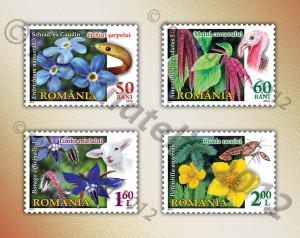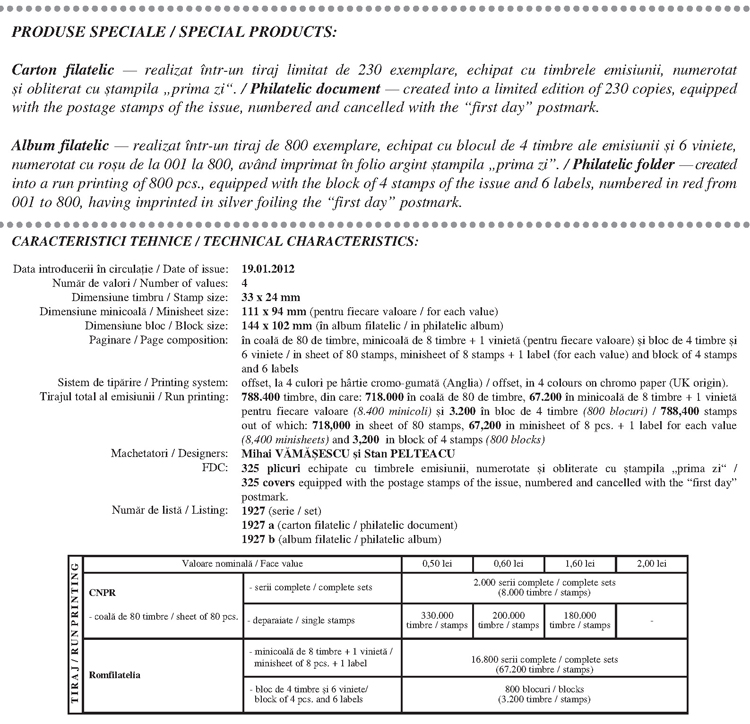The postage stamps issue “Flora of Romania II” completes the project achieved by Romfilatelia on an innovative illustrative thematic. The originality of this project consists in joining the image of the flower with the one of the being, from whose appearance the plant receives its popular name.
The Alpine Forget-me-not (Eritrichium nanum (L.) Schrad. ex Gaudin Boraginaceae family) is illustrated on the postage stamp with the face value of 0.50 lei. It is a herbaceous plant with small leaves up to 4.5 mm wide, covered with silky white hairs. Its flowers are blue, rarely white, and have a pleasant smell.
The Love-lies-bleeding (Amaranthus caudatus L. – Amaranthaceae family), an annual plant that can reach a height of 2 m is illustrated on the postage stamp with the face value of 0.60 lei. The plant blossoms from July to October. At the beginning, its inflorescences are long and thin and, as the summer passes, they become thick and red. The species originates in South America and, inRomania it is cultivated for ornamental purposes.
The Starflower (Borago officinalis L. – Boraginaceae family), an annual plant having a high, thick, arborescent stalk, covered by hairs, is illustrated on the postage stamp with the face value of 1.60 lei. It can reach heights of 30-60 cm. Its leaves have round or little denticulate edges. First, the corolla is star-shaped red, then turning blue. The starflower is a melliferous plant, originating from the Mediterranean area, cultivated and turned wild inRomania. The plant is used in human and veterinary medicine.
The Silverweed (Potentilla anserina L. – Rosaceae family), a herbaceous plant, 15-50 cm high, is illustrated on the postage stamp with the face value of 2.00 lei. Its flowers are yellow. It can be found in plain areas and at altitudes up to 1,300-1,500 m, in moist, often ruderalised meadows, but also on the banks of lakes and rivers. It blossoms from May through August. The plant is used in human and veterinary medicine.
We would like to thank the Romanian Academy Institute of Biology (Dr. Sorin Stefanut, Head of Ecology, Taxonomy and Nature Conservation Department) for the documentary assistance granted in the accomplishment of this postage stamps issue.
Issue date: 2012-01-19










